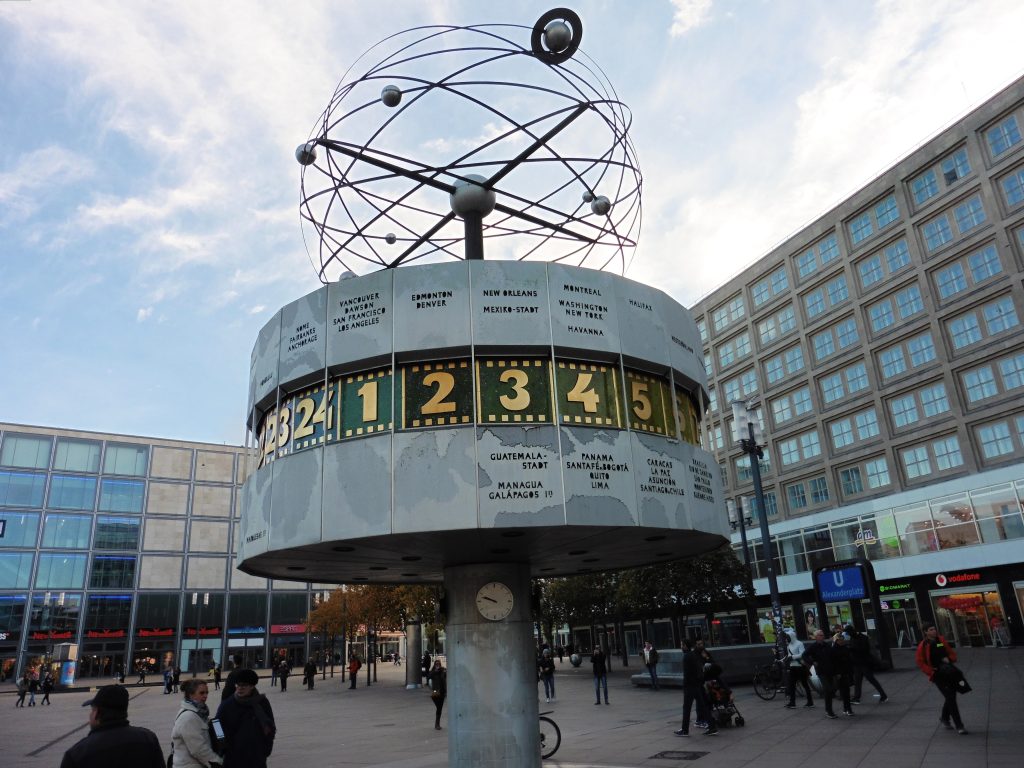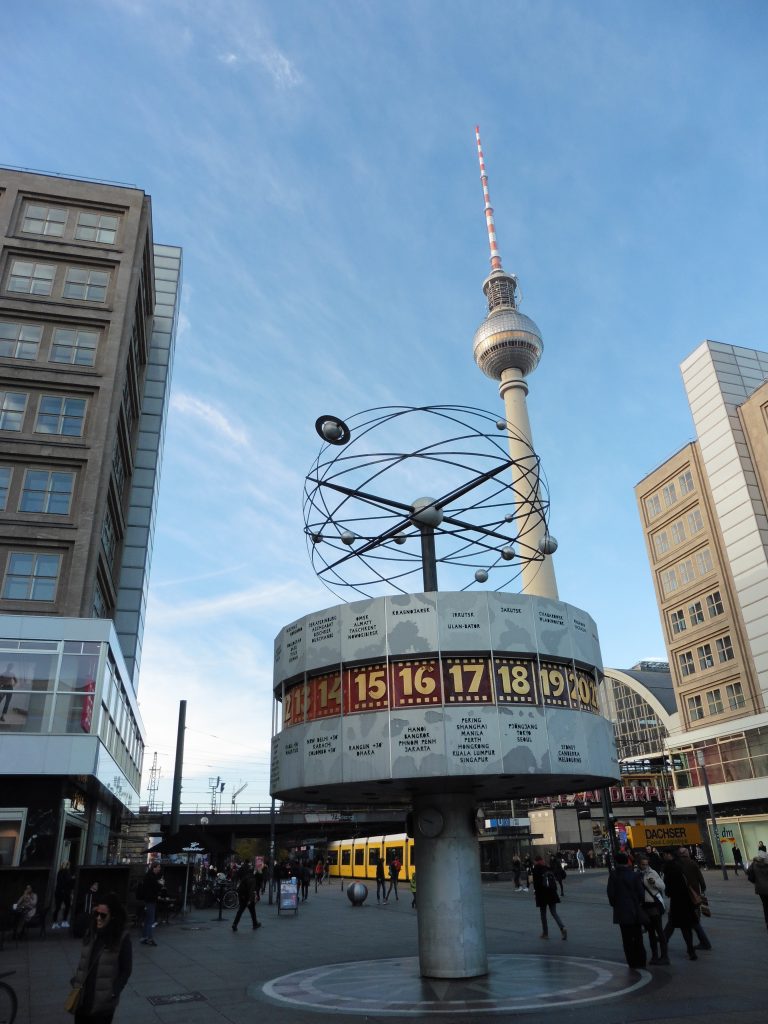 The Memorial is surprisingly deep at points and shallow at others.
The Memorial is surprisingly deep at points and shallow at others.
The Definitive Location

 The sixteen ton world clock was opened to the public in 1969, shortly before the twentieth anniversary of the German Democratic Republic, along with the Berlin TV Tower(seen in the background). The erection of the clock was part of a larger plan to expand and reorganize Alexanderplatz as a whole. At the end of the renovations, the public square was four times larger than it was at the end of the World War II.
The sixteen ton world clock was opened to the public in 1969, shortly before the twentieth anniversary of the German Democratic Republic, along with the Berlin TV Tower(seen in the background). The erection of the clock was part of a larger plan to expand and reorganize Alexanderplatz as a whole. At the end of the renovations, the public square was four times larger than it was at the end of the World War II.
It was intended to be both a symbol of Communist power and of Berlin. It remains the latter today, as it is easily visible throughout the central and some suburban districts of Berlin. With its height of 368 metres (including antenna) it is the tallest structure in Germany, and the second-tallest structure in the European Union.
The major version number change is because in this version, Syndication Links takes on a new role. As promised previously, I’ve built new syndication code and added supported for Bridgy and Indienews, which both uses Webmentions to trigger a syndication action. This is disabled by default.
As my first live use outside of testing, I’m using the plugin to send this post to Indienews and Twitter(via Bridgy).
The new code adds the concept of a syndication provider, which, when registered, adds the provider as a syndication target for Micropub clients as well as adds it to the WordPress classic editor as a series of checkboxes, er postone for each service.
The Bridgy Publish plugin I announced deprecation on had additional options on a per post and a global level. While the global settings will be coming back in a future version, I likely will not bring back the per-post settings.
Instead, I’d like to add more intelligence behind these decisions, based on other properties of the post. A checkbox is all you should need. The same with auto-syndication. If you decide you want everything to go to Twitter or some site, it shouldn’t check the box…there shouldn’t be a box at all. It should just go, even if there are some more parameters to make that decision…type of post, etc.
So, you are either all in, or in on a per post basis.
I look forward to feedback. This is only the beginning. I hope to do what I did for displaying syndication links, and interface with existing plugins in addition to writing my own integrations.
Because of that, I completely rewrote the system that registers new location providers so I could more easily create new ones.
What’s next for this plugin? Well, better logic around location visibility. Right now, if you do not set it, it goes to a global default.
So, I’d like to include geofencing. That would be a list of zones. Zones would be a location with a radius around it that if you are inside, it would automatically set to protected and/or replace the address with a generic one. For example, if you are within 50 meters of home, it would always use a pre-identified location of ‘Home’ and/or default to a city level description.
The plugin supports Location providers other than the browser. This means that the plugin could query a server to get the current location of the user.
However, there aren’t any I’ve implemented yet really. But this would allow me to query an API to get my location, which has a lot of potential in future, especially if I want to look up my historical location.
For example, I’ve let Google store some of my location history since March of 2013. There is no API I know of to poll the data, but you can export it. I would just have to find a place to import it to. 6 years, 50mb of data. If I had some way to load it up, query it by date and time, I would be able to add location to all posts and photos that didn’t have it, based on the location of my phone at the time the post was made.
I already have a program on my phone that sends my location periodically to my home automation system, but I’d have to try something different to store historical data. There are several options for this. I’m tempted to write something into WordPress, as I have a tendency to build things into my website. Not sure if there is an off the shelf project to suit my needs, though I’ve looked at Aaron Parecki’s Compass. I could build similar functionality into my site to accommodate this, but I think I need something that both my house and my website can query.
Either way, look to see me testing this on my upcoming trip to Indiewebcamp Berlin.
For those of you not familiar with it, Micropub is a standard that allows for you to publish to a website.
The major work on this actually finished in August, but due to some bug issues, most of them in the accompanying IndieAuth plugin, that affected some of the testers, I held off on releasing the plugin till today. If there is anyone still experiencing issues, please open an issue on the Micropub plugin Github repository.
The core functionality of the plugin remains the same, as does much of the original code. So, what changed?
And only one major new feature. A media endpoint. A media endpoint handles uploading of media files and hands back a URL to the Micropub endpoint. This one uploads to the WordPress Media Library.
The Post Kinds update last week already ensured that Post Kinds will work well with the changes.